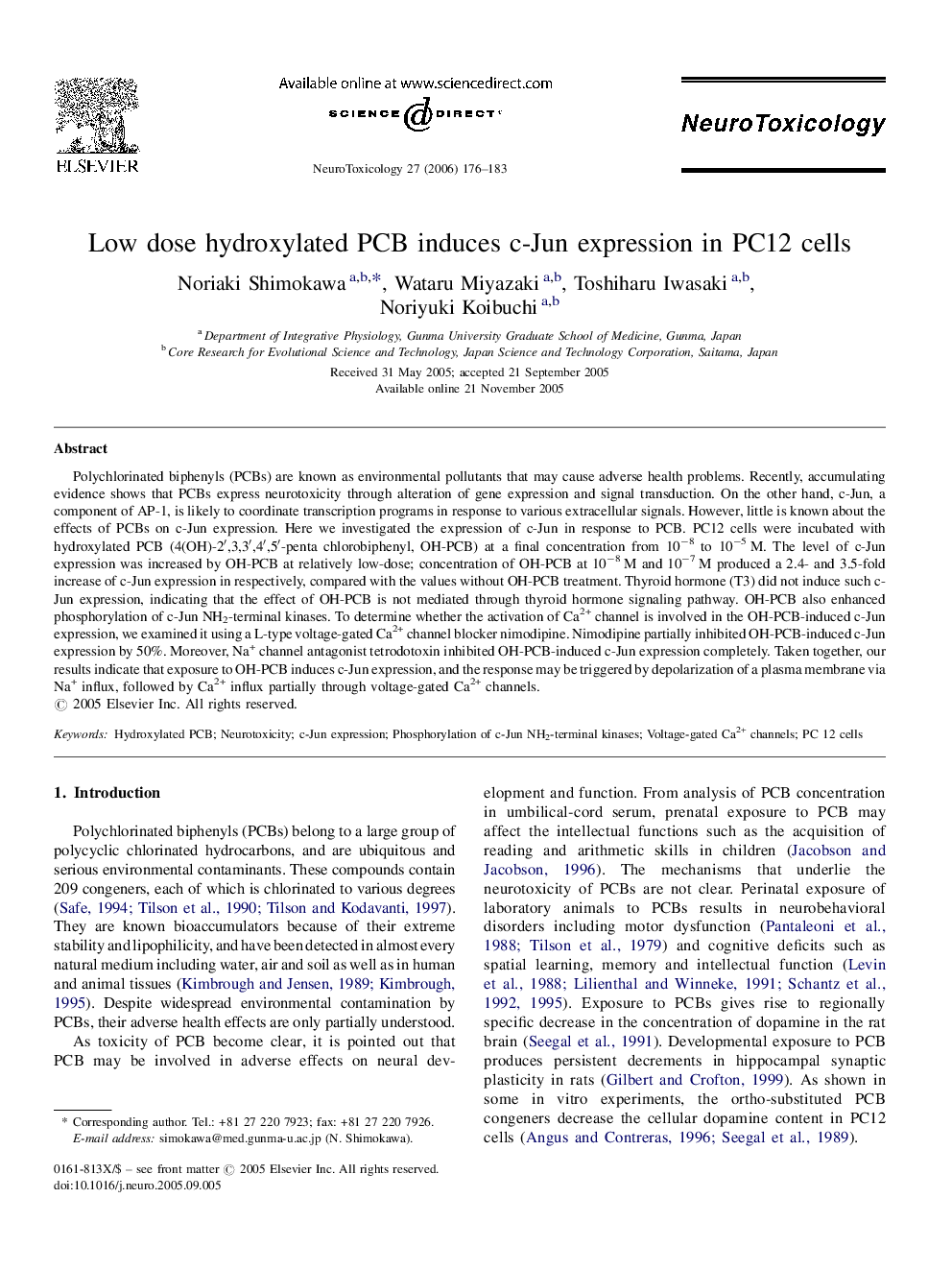| Article ID | Journal | Published Year | Pages | File Type |
|---|---|---|---|---|
| 2590263 | NeuroToxicology | 2006 | 8 Pages |
Polychlorinated biphenyls (PCBs) are known as environmental pollutants that may cause adverse health problems. Recently, accumulating evidence shows that PCBs express neurotoxicity through alteration of gene expression and signal transduction. On the other hand, c-Jun, a component of AP-1, is likely to coordinate transcription programs in response to various extracellular signals. However, little is known about the effects of PCBs on c-Jun expression. Here we investigated the expression of c-Jun in response to PCB. PC12 cells were incubated with hydroxylated PCB (4(OH)-2′,3,3′,4′,5′-penta chlorobiphenyl, OH-PCB) at a final concentration from 10−8 to 10−5 M. The level of c-Jun expression was increased by OH-PCB at relatively low-dose; concentration of OH-PCB at 10−8 M and 10−7 M produced a 2.4- and 3.5-fold increase of c-Jun expression in respectively, compared with the values without OH-PCB treatment. Thyroid hormone (T3) did not induce such c-Jun expression, indicating that the effect of OH-PCB is not mediated through thyroid hormone signaling pathway. OH-PCB also enhanced phosphorylation of c-Jun NH2-terminal kinases. To determine whether the activation of Ca2+ channel is involved in the OH-PCB-induced c-Jun expression, we examined it using a L-type voltage-gated Ca2+ channel blocker nimodipine. Nimodipine partially inhibited OH-PCB-induced c-Jun expression by 50%. Moreover, Na+ channel antagonist tetrodotoxin inhibited OH-PCB-induced c-Jun expression completely. Taken together, our results indicate that exposure to OH-PCB induces c-Jun expression, and the response may be triggered by depolarization of a plasma membrane via Na+ influx, followed by Ca2+ influx partially through voltage-gated Ca2+ channels.
